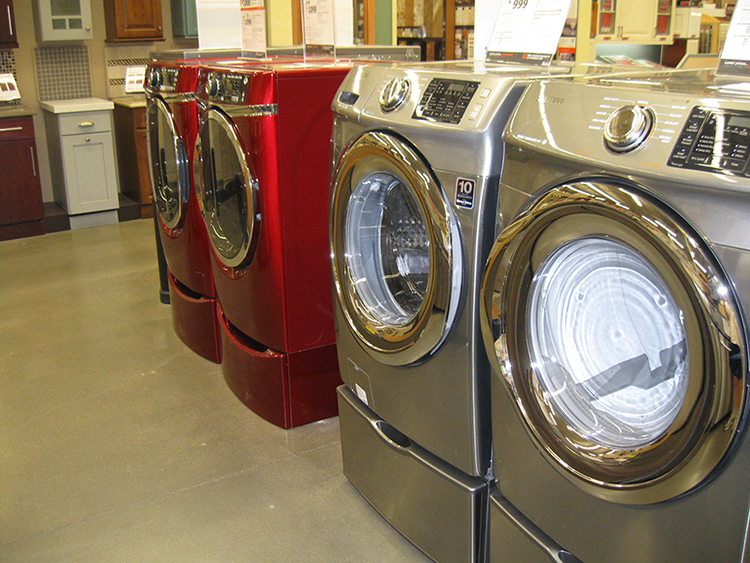For major appliances, comparing the EnergyGuide label is the best way to find the cost of using them. Based on the purchase price, you can calculate which one provides the best return.
The most efficient one is not always the best buy from a payback standpoint, but there are other factors to consider. Some people are concerned about the environmental impact of appliances, so they are willing to spend extra for the most efficient models. Choosing an Energy Star® model is a good choice.
To do a proper payback analysis, you must determine the annual operating cost of using an appliance. You may have the old EnergyGuide label, or you may find it on the internet. But remember, these are only averages. If you are already energy conscious, your operating costs are likely on the low side, so savings from installing a new appliance will be lower than Guide figures.
The easiest way to calculate this cost is to download the “Save Energy, Save Money” app from TogetherWeSave.com, which offers several home appliance calculators to help compare the cost of different appliances sizes, styles and ages, and a “Home Tour” to learn about saving energy.
Another way is to find the wattage rating on the nameplate. Divide it by 1,000 and multiply the result by your $/kwh electric rate to get the operating cost-per-hour. If the nameplate lists amperage, multiply it by 120 to figure the watts. For appliances with a thermostat, reduce the operating cost by about 50 percent.
The rate of efficiency improvements and meaningful new features in major appliances is slowing, so don’t wait if you really need a new one. An exception is TVs, as their prices are constantly dropping, and features and quality improving.
In general though, keep older appliances about 10 years, or until they need expensive repairs. If you use them as seldom and as efficiently as possible, they will not cost a lot more to use than a newer one. Even for a refrigerator, which runs constantly, your usage habits can really influence electricity consumption.
If you have a large family and do much laundry, that cost includes the water cost, and heating it. Upgrading your water heater, to perhaps a heat pump model, will reduce your dishwashing, bathing and laundry costs.
New front-loading washers are more energy efficient than top-loaders since they require less heated water (and less detergent). They also have a faster spin cycle, which extracts more water, so the dryer runs less.
For a new dishwasher, make sure it has a built-in water “pre-heater.” This allows you to set your water heater temperature lower without sacrificing the cleaning power of hotter water. Select a model with many cycles, so you can target the cycle length to each load’s requirements.
Just like a house, a smaller refrigerator has less interior space to cool, so uses less electricity. Don’t go to extremes on the small size, though. If you have to keep the door open to hunt for what you want, more energy is wasted than saved. Energy Star refrigerators use about one-half the energy of 10-year old models.
In new ranges, the energy efficiency of various models doesn’t vary much. Convection ovens bake faster, so they use less electricity for some foods. Induction units lose less heat to the room air, so electricity use is somewhat less. The best way to save is to use the microwave or other small countertop appliances whenever possible.






